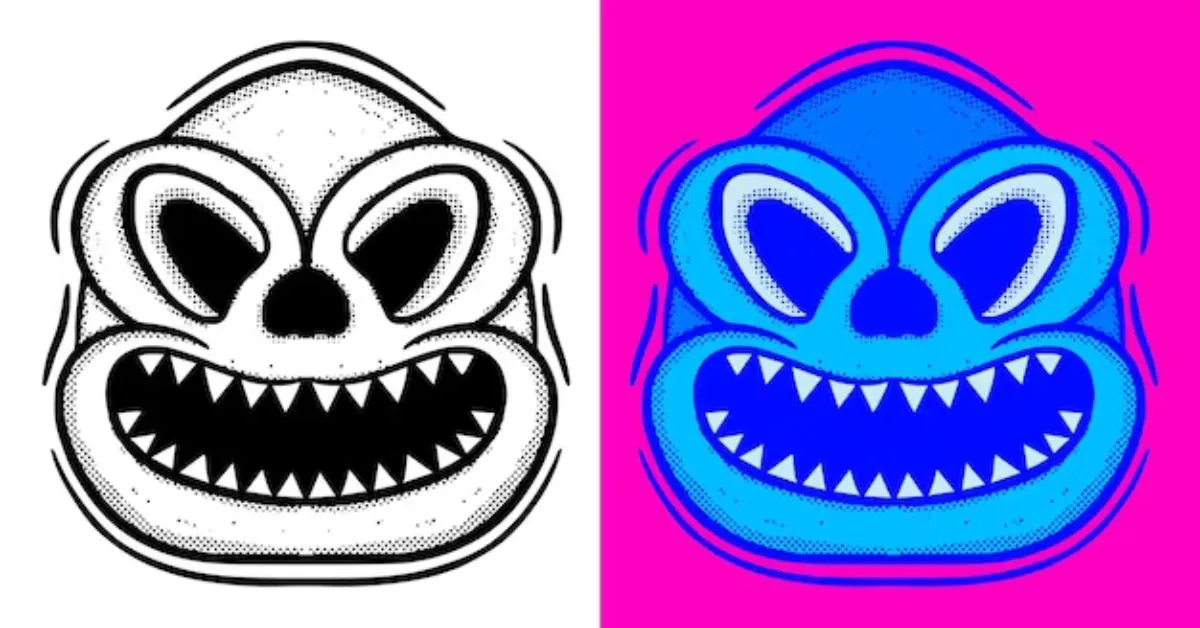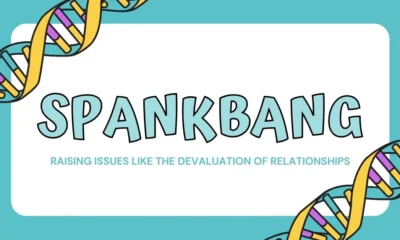General
Troll Face: A Journey Through Internet Trolling Culture

Memes are the medium of exchange in the wide and always changing world of online culture, and Trollface is one of the most recognizable and provocative memes. This angry cartoon meme was made by Carlos Ramirez in 2008, and it has come to represent online harassment and trolls. This article will look at the history of Trollface, how it spread across different websites, how it affected online culture, and the fascinating tale of Carlos Ramirez, the man who created it, navigating the world of memes and licensing.
The Birth of Trollface
Carlos Ramirez, an artist and internet enthusiast, gave life to Trollface in 2008. The character features a distinctive, mischievous smile, accompanied by squinted eyes, creating an expression that perfectly encapsulates the essence of internet trolling. Trolling, in the online context, refers to the act of intentionally provoking or annoying others for one’s amusement.
Ramirez’s creation quickly found a home on 4chan, an imageboard website known for its diverse and often controversial content. Trollface resonated with the online community, becoming a popular reaction image in response to various situations. Its rise to fame was marked by its ability to convey a sense of nonchalant taunting, making it the perfect embodiment of internet trolls.
Spread Across the Web
As with many internet memes, Trollface’s popularity spread like wildfire across various online platforms. Social media sites, forums, and image-sharing websites embraced the mischievous visage, amplifying its presence in the digital realm. The simplicity of the image and its versatility in different contexts contributed to its widespread adoption.
Accompanying Phrases: The Language of Trolling
Trollface’s impact extended beyond its visual representation, as it often came paired with specific phrases that further enhanced its trolling nature. Commonly used expressions like “Problem?” and “You mad, bro?” became inseparable from Trollface, amplifying the provocative message it conveyed. These phrases became part of the language of internet trolling, creating a unique and easily recognizable form of online communication.
The Internet Equivalent of Children’s Taunts
The cultural significance of Trollface lies in its role as the internet equivalent of children’s taunts. Much like the schoolyard banter and teasing that children engage in, Trollface embodies a form of online provocation. It serves as a digital tool for those seeking to elicit reactions from others, often with the primary goal of amusement.
The Impact on Internet Culture
Trollface’s influence on internet culture is undeniable. It has become a symbol of the irreverent and often chaotic nature of online interactions. Memes, in general, have a unique ability to capture and express cultural sentiments, and Trollface has played a pivotal role in shaping the language of internet trolling.
The Evolution of Trolling
While Trollface is a prime example of a trolling meme, it is essential to recognize the broader evolution of trolling on the internet. Trolling has adapted and mutated over the years, encompassing a wide range of behaviors from harmless pranks to more malicious forms of online harassment. Trollface stands as a visual representation of the lighter side of trolling, but its existence is a testament to the complex and multifaceted nature of online interactions.
Carlos Ramirez: The Creative Mind Behind Trollface
The story of Trollface would be incomplete without delving into the journey of its creator, Carlos Ramirez. Having inadvertently become a key player in internet culture, Ramirez found himself at the center of a phenomenon he had never anticipated.
The Origins of Trolls
Carlos Ramirez’s journey into meme creation began in 2008 when he crafted Troll face as a character meant to represent trolls on the internet. Trolls, in this context, are individuals who engage in provocative and disruptive behavior online, often for their amusement. Little did Ramirez know that his creation would take on a life of its own, becoming a symbol of trolling across the vast landscape of the internet.
The 4chan Connection
The initial reception of Troll face occurred on 4chan, an imageboard website known for its diverse and often controversial content. The anonymous and dynamic nature of 4chan allowed memes to spread rapidly, and Trollface found a receptive audience within the community. Its distinct facial expression and playful nature made it a perfect fit for the evolving culture of internet trolling.
The Journey to Licensing
As Troll face gained popularity, it also caught the attention of those seeking to use it for various purposes. Recognizing the potential value of his creation, Ramirez took the initiative to register Trollface with the US Copyright Office. This strategic move allowed him to assert control over the use of the meme and monetize its licensing.
Monetizing Memes: Ramirez’s Success Story
In an unexpected turn of events, Carlos Ramirez has earned over $100,000 in licensing fees since registering Troll face with the US Copyright Office. This success highlights the evolving landscape of meme culture, where memes are not just ephemeral expressions but intellectual properties with potential financial value.
The Business of Memes
The monetization of memes has become a growing trend in the digital age. As internet culture continues to permeate mainstream society, the value of memes as a form of expression and communication has risen. Ramirez’s decision to assert copyright over Troll face demonstrates the shifting dynamics of internet content creation, where memes can transition from being fleeting jokes to valuable assets.
Challenges of Memetic Ownership
The journey of Troll face also brings attention to the challenges of memetic ownership and the blurred lines between creativity, culture, and commerce. Memes often emerge from collective creativity and thrive on being shared and reshaped by the online community. Asserting ownership over a meme raises questions about the balance between individual rights and the collaborative nature of internet culture.
Conclusion
Troll face, born out of the depths of 4chan, has become a symbol of internet trolling and a cultural phenomenon in its own right. Its journey from an obscure meme to a licensed intellectual property reflects the dynamic nature of internet culture and the evolving relationship between creativity and commerce. Carlos Ramirez’s success in monetizing Trollface underscores the growing recognition of memes as valuable cultural artifacts in the digital age.
As Trollface continues to provoke reactions and amuse internet users worldwide, it serves as a reminder of the ever-changing landscape of online interactions. The legacy of Trollface is not just in its ability to taunt and tease but in its role as a snapshot of a particular moment in the ongoing evolution of internet culture.
General
The Mating Press Position and its Role in Sexual Wellness

missionary position, involves the male partner assuming a more assertive and dominant role during sexual intercourse. While the missionary position typically features the male partner on top, the Mating Press introduces a heightened sense of aggression, creating a unique dynamic between partners. It is crucial to note that engaging in any sexual activity should be consensual, with open communication between partners to ensure a positive and enjoyable experience.
Physical Mechanics and Dynamics:
Exploring the physical mechanics of the Mating Press position involves understanding the nuances that differentiate it from the traditional missionary position. The position often includes variations in the angle and depth of penetration, providing a different sensory experience for both partners. This physicality may contribute to increased arousal and satisfaction, but it is essential for individuals to be aware of their comfort levels and communicate openly about their desires.
Potential Benefits of the Mating Press Position:
- Variety and Novelty:
The Mating Press position can introduce variety and novelty into sexual relationships, preventing monotony and enhancing overall satisfaction. Experimenting with different positions can contribute to a more fulfilling and exciting intimate connection between partners. - Enhanced Emotional Connection:
Sexual intimacy plays a crucial role in fostering emotional connections between partners. The Mating Press position, with its unique dynamics, may deepen the emotional bond by allowing couples to explore new facets of their relationship. - Increased Physical Stimulation:
The altered mechanics of the Mating Press position can lead to increased physical stimulation for both partners. This heightened sensation may contribute to a more intense and pleasurable sexual experience.
Communication and Consent:
While exploring different sexual positions can be an exciting aspect of a relationship, it is imperative to prioritize communication and consent. Openly discussing desires, boundaries, and comfort levels with a partner is crucial to creating a safe and trusting environment. Consent should be enthusiastic, continuous, and mutual, ensuring that both individuals feel respected and comfortable throughout the intimate encounter.
Potential Concerns and Considerations:
- Physical Comfort and Fitness:
Engaging in more assertive positions, such as the Mating Press, may require a certain level of physical fitness and flexibility. It is essential for individuals to be mindful of their bodies and communicate any discomfort or limitations to their partners. - Emotional Comfort:
Experimenting with new sexual positions can evoke a range of emotions. Partners should be attentive to each other’s emotional well-being and provide support and reassurance as needed.
Conclusion:
The Mating Press position represents one of the many variations in the spectrum of human sexuality. As with any sexual activity, open communication, trust, and consent are paramount to ensuring a positive and enjoyable experience for both partners. Exploring different positions, including the Mating Press, can add excitement and variety to intimate relationships, deepening the emotional connection and enhancing overall satisfaction. It is crucial for individuals to approach sexual experimentation with a mutual understanding of boundaries and a commitment to each other’s well-being. As society continues to evolve, conversations around sexual wellness and exploration become increasingly important, emphasizing the significance of respecting individual preferences and fostering healthy.
General
What Does a Solid Black Flag Mean on a House?

In the realm of symbolism, flags serve as powerful communicators of messages, values, and identities. They flutter proudly atop buildings, ships, and even homes, conveying a myriad of meanings. Among the vast array of flags, one might come across a peculiar sight: a solid black flag adorning a house. What could this enigmatic symbol signify? Let us delve into the depths of symbolism to uncover the potential meanings behind the presence of a solid black flag on a house.
The Intriguing Aura of the Black Flag:
Traditionally, flags have been utilized to symbolize nations, organizations, or causes, with each color and design carrying its own significance. However, the presence of a solid black flag on a house veers away from these conventional uses, inviting speculation and curiosity.
Black, as a color, has long been associated with various meanings across different cultures and contexts. Often symbolizing darkness, mystery, or mourning, it carries a sense of solemnity and gravity. When applied to flags, black can take on additional connotations, ranging from rebellion to specific messages of distress or protest.
Historical Context: The Jolly Roger and Beyond
One of the most iconic uses of the black flag is found in the infamous Jolly Roger, the traditional flag of European and American pirates. Featuring a white skull and crossbones atop a black background, the Jolly Roger struck fear into the hearts of sailors and coastal inhabitants during the age of piracy. Its message was clear: danger, lawlessness, and a disregard for authority.
Beyond piracy, black flags have been employed by various groups throughout history to signal defiance, rebellion, or mourning. During periods of political upheaval or revolution, black flags might fly high as a symbol of resistance against oppressive regimes. Similarly, in times of mourning or tragedy, black flags may be raised to express grief and solidarity.
Modern Interpretations: Contemporary Uses of the Black Flag
In contemporary contexts, the meaning of a solid black flag on a house can vary widely, depending on the intentions of the individual or group displaying it. While some instances may harken back to historical symbolism, others may take on entirely new meanings shaped by modern circumstances and ideologies.
One potential interpretation of a black flag on a house is as a symbol of protest or dissent. In an era marked by social and political tensions, individuals or communities may choose to fly black flags as a visual statement of opposition to perceived injustices or grievances. Whether advocating for environmental causes, human rights, or systemic change, the black flag can serve as a powerful emblem of resistance.
Moreover, the presence of a black flag on a house may also indicate a state of mourning or remembrance. In times of personal loss or community tragedy, displaying a black flag can express solidarity with those who are grieving and serve as a visible reminder of the need for compassion and support.
Potential Interpretations and Meanings
Despite its ominous appearance, the solid black flag on a house is not necessarily indicative of malevolent intent. Rather, its meaning is shaped by the context in which it is displayed and the message intended by those who raise it.
For some, the black flag may represent a call to action, urging society to confront pressing issues and work towards positive change. It may serve as a reminder of the complexities of the human experience, encompassing both struggle and resilience in the face of adversity.
In other instances, the black flag may serve as a beacon of solidarity and empathy, fostering connections within communities and offering solace to those in need. Its presence can signify a willingness to confront difficult truths and support one another through times of hardship.
Conclusion: Unraveling the Mysteries of the Black Flag
In the tapestry of symbols that adorn our world, the solid black flag on a house stands out as a potent emblem of meaning and significance. Whether invoking the swashbuckling adventures of pirates or the solemnity of mourning, its presence commands attention and invites interpretation.
While the exact meaning of a black flag on a house may elude easy categorization, its symbolism remains deeply rooted in history, culture, and human experience. Whether signaling defiance, mourning, or solidarity, the black flag serves as a reminder of the complexities of our shared journey and the myriad ways in which we seek to navigate its challenges.
So, the next time you encounter a solid black flag fluttering in the breeze, take a moment to ponder its significance. Behind its enigmatic facade lies a rich tapestry of meanings, waiting to be unraveled and understood.
General
Online Paging Performance: Strategies, Tips, and Best Practices
-

 Technology8 months ago
Technology8 months ago社工库: Navigating the Depths of Social Engineering Databases
-

 News6 months ago
News6 months agoFinding the Truth Behind a Trails Carolina Death
-

 Education7 months ago
Education7 months agoFortiOS 7.2 – NSE4_FGT-7.2 Free Exam Questions [2023]
-

 Technology3 months ago
Technology3 months agoAmazon’s GPT-55X: A Revolutionary Leap in AI Technology
-

 Education8 months ago
Education8 months agoExploring the Significance of 92career
-

 News7 months ago
News7 months agoClaudia Goldin: A Trailblazer in Understanding Gender Pay Gap
-

 History & Tradition8 months ago
History & Tradition8 months agoλιβαισ: Unraveling Its Mystique
-

 Entertainment6 months ago
Entertainment6 months agoFree Tube Spot: Your Gateway to Endless Entertainment













